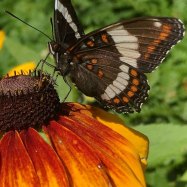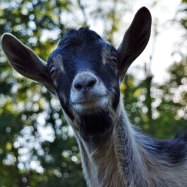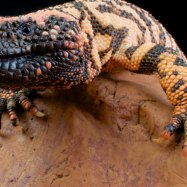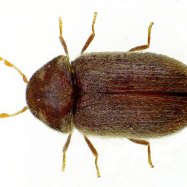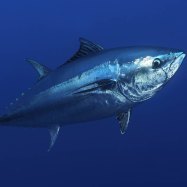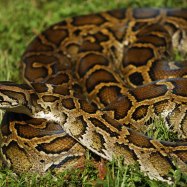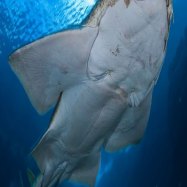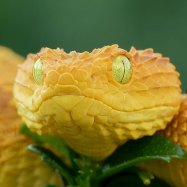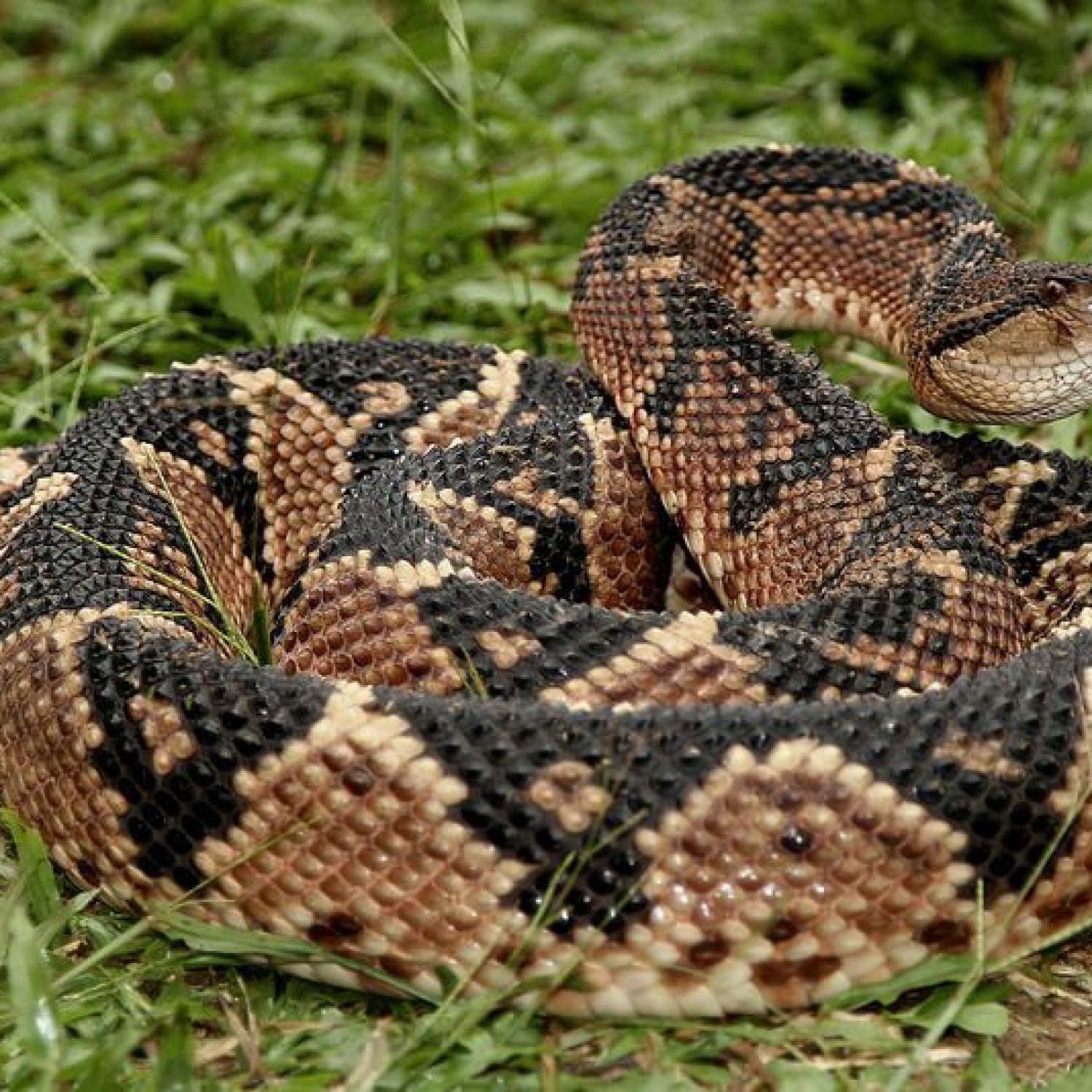
Bushmaster Snake
Up to 10 feet (3 meters)
The Bushmaster Snake, found in the forest floors and lower levels of rainforests, can reach up to 10 feet in length. It belongs to the Viperidae family and has a large, thick body with a distinct triangular-shaped head. Beware of this powerful predator when exploring the wild! #BushmasterSnake #Rainforest #Viperidae
Animal Details Summary:
Common Name: Bushmaster Snake
Kingdom: Animalia
Habitat: Tropical rainforests
The Fear-Inducing Bushmaster Snake
The rainforests are known for their rich biodiversity, housing some of the most magnificent creatures on the planet. One such creature is the Bushmaster snake, a formidable reptile that strikes fear into the hearts of many. With its powerful and intimidating appearance, the Bushmaster snake has been the subject of countless myths and legends, often portrayed as a venomous and deadly predator.But beyond the tales and misconceptions lies a truly fascinating animal, with unique characteristics and behaviors that make it a crucial part of the rainforest ecosystem Bushmaster Snake. In this article, we will take a closer look at the Bushmaster snake and discover what makes this animal so remarkable.
The Basics: Scientific Classification and Habitat
Before diving into the specifics of the Bushmaster snake, let's first understand its scientific classification. The Bushmaster snake belongs to the Animalia kingdom, the Chordata phylum, and the Reptilia class. Within the class of reptiles, it belongs to the order Squamata and the family Viperidae, which includes other venomous snakes such as rattlesnakes and cottonmouths.The Bushmaster snake is commonly found in the tropical rainforests of Central and South America, making its home in countries like Brazil, Colombia, and Venezuela. However, due to the region's vast size and dense forest cover, their exact distribution is still not fully understood. Within the rainforest, the Bushmaster snake prefers to inhabit forest floors and the lower levels, where it can find ample hiding spots and prey.
The Appearance: Striking Features of the Bushmaster Snake
At first glance, the Bushmaster snake is an impressive and intimidating creature. It is one of the largest venomous snakes in the world, with an average length of 7-8 feet and can reach up to 10 feet (3 meters) Blobfish. Its body is thick and muscular, with a stout tail and a triangular-shaped head.The snake's name, Bushmaster, can be attributed to its coloration, which is predominantly dark brown or black with lighter scales on its belly. This pattern allows the snake to blend into the forest floor, making it challenging to spot. However, some individuals may also have a reddish-brown color or even a speckled appearance. This variation in coloration adds to the Bushmaster snake's mysticism and makes it truly stand out among other snakes.
Feeding Habits: Carnivorous Diet of the Bushmaster Snake
As a predator, the Bushmaster snake has a diet that consists mainly of small mammals and birds. Its preferred prey includes rodents like rats and squirrels, as well as birds like toucans and parrots. These animals are abundant in the rainforest, making it an ideal hunting ground for the snake.To catch its prey, the Bushmaster snake uses its powerful senses. It has excellent vision and can sense body heat, allowing it to locate potential prey easily. Once it spots its target, it uses its lightning-fast strike, capable of reaching up to 10 feet, to immobilize its prey. Its large size and potent venom also make it a formidable and efficient predator in the rainforest.
However, despite its deadly reputation, the Bushmaster snake rarely poses a threat to humans. Its elusive nature and preference for the forest floor make it unlikely for encounters with humans, and it will only strike in self-defense if provoked or threatened.
Importance in the Rainforest Ecosystem
Despite its fearsome appearance, the Bushmaster snake plays a vital role in maintaining the balance of the rainforest ecosystem. As a top predator, it helps control populations of small mammals, preventing them from overgrazing and destroying vegetation. This makes the Bushmaster snake a crucial factor in maintaining the health and diversity of the rainforest.Furthermore, the Bushmaster snake is also an indicator of a healthy and thriving ecosystem. Its presence in an area serves as a sign of a rich biodiversity and a suitable habitat for a wide range of species. Thus, protecting and conserving the Bushmaster snake also means preserving the entire rainforest ecosystem.
The Threats Facing the Bushmaster Snake
Sadly, the Bushmaster snake is facing many threats that put its population at risk. The biggest threat is habitat loss due to deforestation and human development in the rainforest. As more and more land is cleared for agriculture and urbanization, the Bushmaster snake's living space is shrinking.Another significant threat is illegal poaching and hunting for its venom, which is used in traditional medicines and for its supposed healing properties. This demand for its venom has led to the capture and killing of many Bushmaster snakes, disrupting their natural population and potentially leading to their extinction.
The Need for Conservation Efforts
To protect the Bushmaster snake and preserve its role in the rainforest ecosystem, conservation efforts are crucial. This includes enforcing laws to prevent deforestation and habitat destruction and educating local communities on the importance of the Bushmaster snake. Conservationists and scientists are also working on researching and monitoring the snake's population to better understand its distribution and behavior and implement effective conservation strategies.Furthermore, raising awareness about the Bushmaster snake's critical role in the ecosystem can also help create a sense of responsibility and empowerment among people. By understanding and appreciating this remarkable creature, we can all play a part in protecting it and the rainforest it calls home.
In Conclusion
From its striking appearance to its vital role in the rainforest ecosystem, the Bushmaster snake proves to be a fascinating and mysterious creature. By learning more about this elusive reptile, we can dispel myths and misconceptions and gain a greater understanding and appreciation for its unique features and behaviors.While the Bushmaster snake may strike fear in the hearts of many, it is crucial to remember that it plays a crucial role in the delicate balance of the rainforest. Thus, it is more important than ever to protect and conserve this magnificent animal, ensuring its place in the diverse and beautiful world of the rainforest.

Bushmaster Snake
Animal Details Bushmaster Snake - Scientific Name: Lachesis muta
- Category: Animals B
- Scientific Name: Lachesis muta
- Common Name: Bushmaster Snake
- Kingdom: Animalia
- Phylum: Chordata
- Class: Reptilia
- Order: Squamata
- Family: Viperidae
- Habitat: Tropical rainforests
- Feeding Method: Carnivorous
- Geographical Distribution: Central and South America
- Country of Origin: Multiple countries, including Brazil, Colombia, and Venezuela
- Location: Forest floors and lower levels of the rainforest
- Animal Coloration: Dark brown or black with lighter scales on the belly
- Body Shape: Large, thick-bodied snake with a triangular-shaped head
- Length: Up to 10 feet (3 meters)
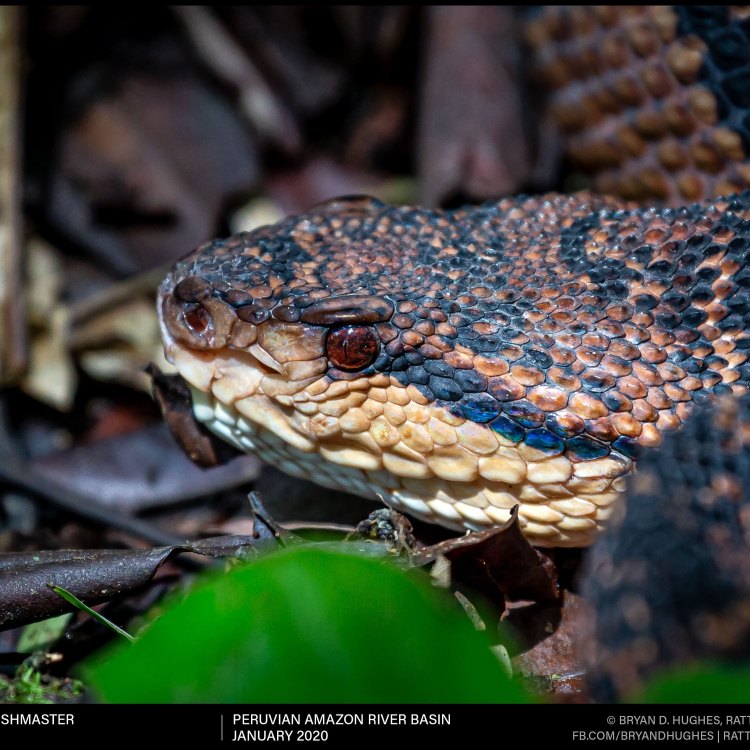
Bushmaster Snake
- Adult Size: Large
- Average Lifespan: About 20-30 years
- Reproduction: Oviparous (egg-laying)
- Reproductive Behavior: Males compete for females and engage in combat
- Sound or Call: Bushmasters produce low-frequency rumbles or hisses
- Migration Pattern: Non-migratory
- Social Groups: Solitary
- Behavior: Nocturnal and highly secretive
- Threats: Habitat loss, poaching, and human persecution
- Conservation Status: Varies by species, ranging from least concern to endangered
- Impact on Ecosystem: Top predator in their habitat, helps control rodent populations
- Human Use: Venom used for medical research and antivenom production
- Distinctive Features: Long fangs and potent venom
- Interesting Facts: Bushmasters have the longest fangs of any snake species
- Predator: Large birds of prey and other snakes
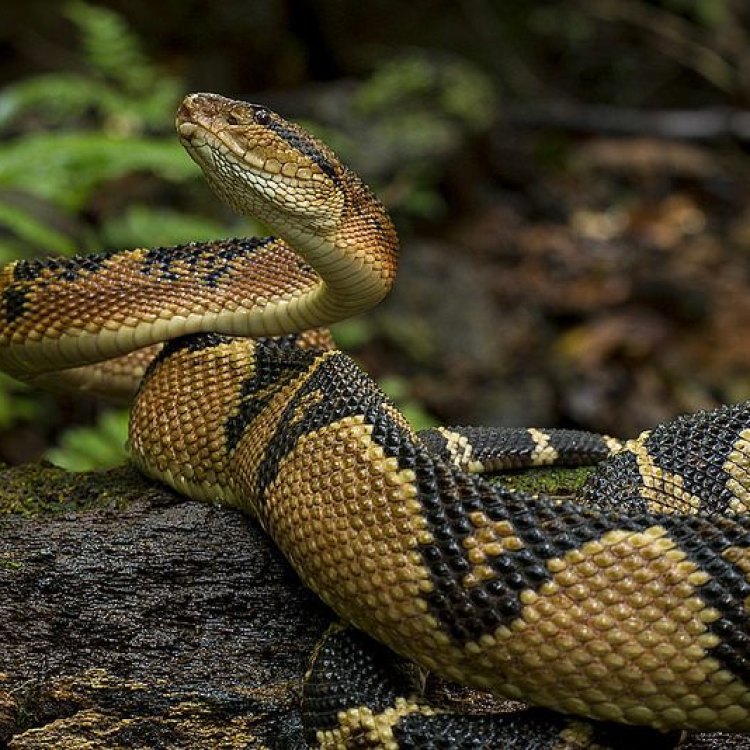
Lachesis muta
The Fascinating World of the Bushmaster Snake
Deep in the dense forests of Central and South America, a predator lurks in the shadows. Its menacing appearance and deadly venom have earned it many names: the "ultimate pit viper," the "master of the bush," and the "symbol of fear." The bushmaster snake, or simply known as bushmasters, are the largest and most enigmatic snakes in the Crotalinae subfamily. Their elusive nature and unique features have captivated the curiosity of humans for centuries PeaceOfAnimals.Com. Let's explore the fascinating world of these ancient reptiles and uncover the secrets that surround them.Size and Lifespan
The bushmaster snake is a large and heavy-bodied species, with some individuals reaching lengths of over 10 feet and weighing up to 15 pounds. This makes them one of the largest venomous snakes in the world. They are heavily-built with a triangular-shaped head and thick, muscular bodies that allow them to overpower their prey and defend themselves against predators.
On average, bushmasters can live for 20 to 30 years in the wild. However, their lifespan can vary depending on environmental factors and human interactions. With a low reproductive rate and slow growth rate, bushmasters have a longer lifespan compared to other snake species.
Reproduction and Reproductive Behavior
Like most snakes, bushmasters are oviparous, which means they lay eggs. During the breeding season, which typically occurs between November and January, the males compete for females through combat Borador. They engage in a wrestling-like behavior called "male-male combat," where they intertwine their bodies and push against each other to establish dominance and secure a mate.
After mating, the female will lay a clutch of 3-17 eggs, which she will incubate for up to 8 months. Once the eggs hatch, the newborn bushmasters are fully independent and do not receive any parental care. This reproductive behavior is critical for the survival of the species, as it ensures the genetic diversity and distribution of the population.
Sound and Communication
Despite their menacing appearance, bushmasters are relatively quiet snakes. They rarely make any vocalizations, but when they do, it's to communicate with other snakes or as a warning to potential predators. Bushmasters produce low-frequency rumbles and hisses, which can be felt rather than heard. This sound is often accompanied by vibration, making it a highly effective method of communication in their dense forest habitats.
Migration and Social Behavior
Bushmasters are non-migratory snakes, meaning they do not actively move from one location to another. Instead, they prefer to stay in their territory, which can range from a few hundred square yards to several acres, depending on their need for resources. They are solitary creatures and do not form social groups or colonies like some other species of snakes. This is due to their highly active predatory behavior and territorial nature, which makes it difficult for them to coexist with other individuals.
Behavior and Habits
Bushmasters are elusive and highly secretive creatures, making them challenging to study in the wild. They are primarily nocturnal, meaning they are mainly active at night and rest during the day. This behavior helps them avoid predators and conserve energy in the hot and humid climate of their tropical habitats.
Bushmasters are expert ambush predators, lying in wait for unsuspecting prey to pass by. They will strike quickly and powerfully, injecting their potent venom into the victim and allowing it to die before consuming it.
Threats and Conservation
Like many other species of snakes, bushmasters are facing various threats that have significantly affected their population and natural habitats. Habitat loss due to deforestation, human persecution, and poaching for their skin and body parts are major threats to their survival. These factors have led to a decline in the population of some bushmaster species, with some listed as endangered on the International Union for Conservation of Nature (IUCN) Red List.
To ensure the survival of the bushmaster, conservation efforts are being implemented in their native habitats. This includes protecting their habitats, educating local communities on their importance, and implementing strict laws and regulations against poaching.
Impact on Ecosystem
As top predators, bushmasters play a vital role in their ecosystem by keeping the populations of their prey, such as rodents, in check. This helps maintain a balance in the food chain, preventing overgrazing and preserving the health of the forest. Without the presence of bushmasters, there could be a significant increase in rodent populations, which can have detrimental effects on the ecosystem.
Human Use and Interesting Facts
Despite their feared reputation, bushmasters have been a source of fascination for humans for centuries. Their venom has been used in medical research, specifically in studying blood clotting disorders and developing new treatments. It has also been used to create antivenom, an essential life-saving treatment for snakebites.
One of the most intriguing features of the bushmaster is its fangs. They have the longest fangs of any snake species, measuring up to two inches in length. These fangs, combined with their potent venom, make bushmasters one of the deadliest snakes in the world.
Predators
Despite their size, bushmasters have a few natural predators in their habitats. Large birds of prey and other snakes, such as king cobras and boa constrictors, have been known to prey on bushmasters. However, with their powerful venom and secretive behavior, bushmasters can often defend themselves against predators successfully.
In conclusion, the bushmaster snake is a truly fascinating and enigmatic creature that has captured the imagination of humans for centuries. They are powerful and deadly predators, yet elusive and highly secretive, making them an intriguing subject for study and conservation efforts. As humans continue to encroach on their habitat and populations decline, it is crucial to protect and preserve these ancient reptiles to ensure the balance of their delicate ecosystems. So, the next time you venture into the dense forests of Central and South America, keep your ears open for the low rumble or hiss of the bushmaster, and marvel at its unique features and interesting behaviors.
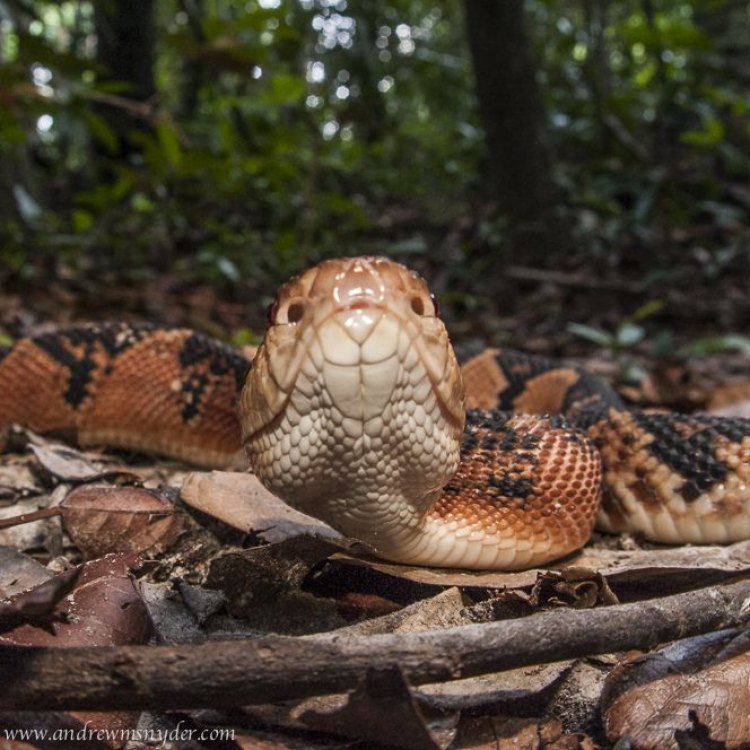
The Fear-Inducing Bushmaster Snake
Disclaimer: The content provided is for informational purposes only. We cannot guarantee the accuracy of the information on this page 100%. All information provided here may change without prior notice.

